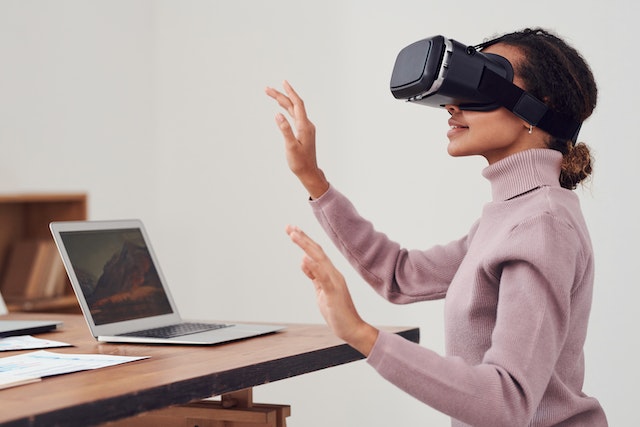Unlocking New Learning Experiences

GUEST POST from Chateau G Pato
Education has always been a key driver of progress, equipping individuals with knowledge and skills to thrive in a rapidly evolving world. Traditional methods of teaching are now being challenged by new technologies that have the potential to transform education as we know it. One such powerful tool is Augmented Reality (AR). By merging digital content with real-world environments, AR creates immersive learning experiences that captivate students’ attention and enhance their understanding. This article explores the remarkable potential of AR in revolutionizing education, with two compelling case studies that demonstrate its transformative impact.
Case Study 1: Anatomy lessons come to life with AR
One of the most challenging subjects for students to grasp is human anatomy. With its complex structures and interconnections, textbooks and diagrams often fall short in truly conveying the intricacies of the human body. However, AR has the ability to bridge this gap by enabling students to visualize and interact with detailed 3D models.
In a recent study conducted in a medical school, students were provided with AR-enabled devices to study human anatomy. By simply pointing their devices at a person, a virtual overlay of the body’s internal systems appeared before their eyes. Students were able to explore the skeletal, muscular, and circulatory systems in real-time, zoom in to examine specific organs, and even observe the effects of diseases on the body. This interactive and hands-on approach not only deepened their understanding but also made learning anatomy an engaging and memorable experience.
The use of AR in anatomy education has shown tremendous potential to revolutionize the field. Students can now have access to 3D models and virtual dissection tools, enabling them to learn at their own pace and explore topics in greater detail. Additionally, AR encourages collaboration and peer-to-peer learning as students can interact with the same virtual models simultaneously, fostering a more dynamic and enriching learning environment.
Case Study 2: Historical landmarks are brought to life
History has long been regarded as a subject that relies heavily on imagination and interpretation. Students often struggle to truly grasp the significance and historical context of landmarks and artifacts. AR has emerged as a game-changer in this regard, enabling students to travel back in time and witness historical events in a way that traditional textbooks cannot.
In a high school history class, students were introduced to AR experiences that brought famous historical landmarks to life. By using AR-enabled smartphones or tablets, students could explore ancient ruins, walk through virtual reconstructions of historical sites, and interact with virtual historical figures. For instance, standing in front of the ancient pyramids of Egypt, students could witness the construction process and visualize the grandeur of these ancient wonders. By immersing themselves in historical environments, students developed a deeper connection with the subject matter and a heightened sense of empathy towards the people who lived in those times.
The implementation of AR in history classes holds immense potential. Not only does it make learning engaging and captivating, but it also encourages critical thinking, analysis, and contextual understanding. Moreover, the use of AR can democratize access to historical sites, providing students with the opportunity to experience distant landmarks that may be inaccessible to them.
Conclusion
As education evolves to meet the needs of the digital age, Augmented Reality has emerged as a powerful tool in revolutionizing learning experiences. Through the integration of AR in subjects like anatomy and history, students can explore and understand complex concepts in a more engaging and immersive manner. These case studies demonstrate how AR can deepen students’ knowledge, stimulate their curiosity, and foster collaboration.
While AR undoubtedly holds great promise, its successful implementation in education requires careful consideration. Human-centered design principles should guide its development and implementation, ensuring that AR enhances the learning process, rather than becoming a mere novelty. By embracing AR’s potential, we have the opportunity to unlock a new era of education where students can engage, explore, and learn in ways that were once unimaginable. Let us seize this opportunity to revolutionize education and equip the next generation with the tools they need to thrive in an ever-evolving world.
SPECIAL BONUS: The very best change planners use a visual, collaborative approach to create their deliverables. A methodology and tools like those in Change Planning Toolkit™ can empower anyone to become great change planners themselves.
Image credit: Pexels
![]() Sign up here to get Human-Centered Change & Innovation Weekly delivered to your inbox every week.
Sign up here to get Human-Centered Change & Innovation Weekly delivered to your inbox every week.